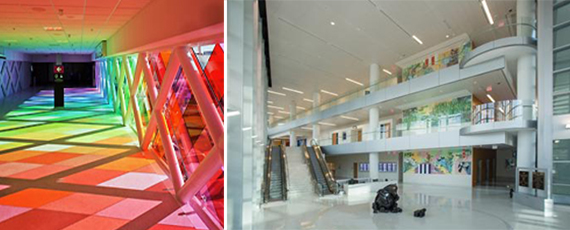Trending
Wynwood opposes legislation aimed at making developers pay for public art in Miami
"If this existed five to 10 years ago, Wynwood woud not exist:" Albert Garcia, vice chairman of Wynwood BID

Wynwood developers and property owners are officially taking a stand against proposed legislation that would force them to either subject their private art projects to city appraisals or pay a percentage of their development costs in lieu of placing art installations.
The Wynwood Business Improvement District’s board of directors voted unanimously on Wednesday to rescind its previous support for two resolutions that would expand the city of Miami’s art in public places program beyond city-owned properties. The Miami City Commission will take a second reading vote on the measures on Thursday.
“This is a big problem for us as a neighborhood,” said BID board member David Lombardi. “This is a tax.”
Albert Garcia, the BID board’s vice chairman, said the ramifications will also hurt other emerging neighborhoods like Allapattah, Little Haiti and Little Havana. “This legislation is a clear and present danger to their ongoing evolution,” Garcia said. “If this existed five to 10 years ago, Wynwood woud not exist.”
More than a year ago, the Wynwood BID provided the city’s planning department a letter of support based on assurances that the trendy, arts-driven neighborhood would get to set up its own rules for what constitutes public art installations on private properties, said board member David Polinsky.
However, the current draft of the legislation dilutes the power Wynwood stakeholders would have over any public art program they develop for the district because it would still need final approval from an art in public places board set up for the entire city, the planning and zoning director and the city commission, Polinsky said. In addition, installations made by young and emerging artists contracted by Wynwood developers and property owners would not qualify as public art, he said.
“The city had previously promised us a carve out,” Polinsky said. “Instead, what we got was a one-and-a-half year grace period. We need to send a clear message that we are rescinding our support.
In a previous interview, Efren Nuñez, Miami’s acting historic preservation officer who was heavily involved in drafting the public art legislation, downplayed concerns that the legislation is going to hurt Wynwood. “On the contrary, our goal is to grow the local artist community,” Nuñez said at the time. “Where you now only have a few developers interested in public art, now every development over $3 million will have to create public art.”
In January, the city commission adopted legislation requiring public art be placed on city-owned sites after city staffers spent nearly two years tweaking the existing program to bring it into compliance with Miami-Dade County’s rules for art in public places. However, commissioners instructed Nuñez to work on legislation that would win the support of the private development community.
Nuñez came up with a proposal similar to ones implemented in other cities such as Doral, Miami Beach and Coral Gables. Developers and property owners can opt out by paying between 0.25 percent to 1 percent of a project’s development cost. A higher cost of construction means an owner pays a higher percentage. If a developer or owner decides to place art installations, the work would have to go through an appraisal, be insured and remain permanent.
Polinsky argued that Wynwood’s public art installations largely consist of wall murals that are often replaced within a short period of time. “Basically, if we have to live with the legislation as drafted, none of the dollars we currently spend on [putting art on] buildings would meet the criteria,” he said. “It is cheaper to pay the fee than put up the art.”




